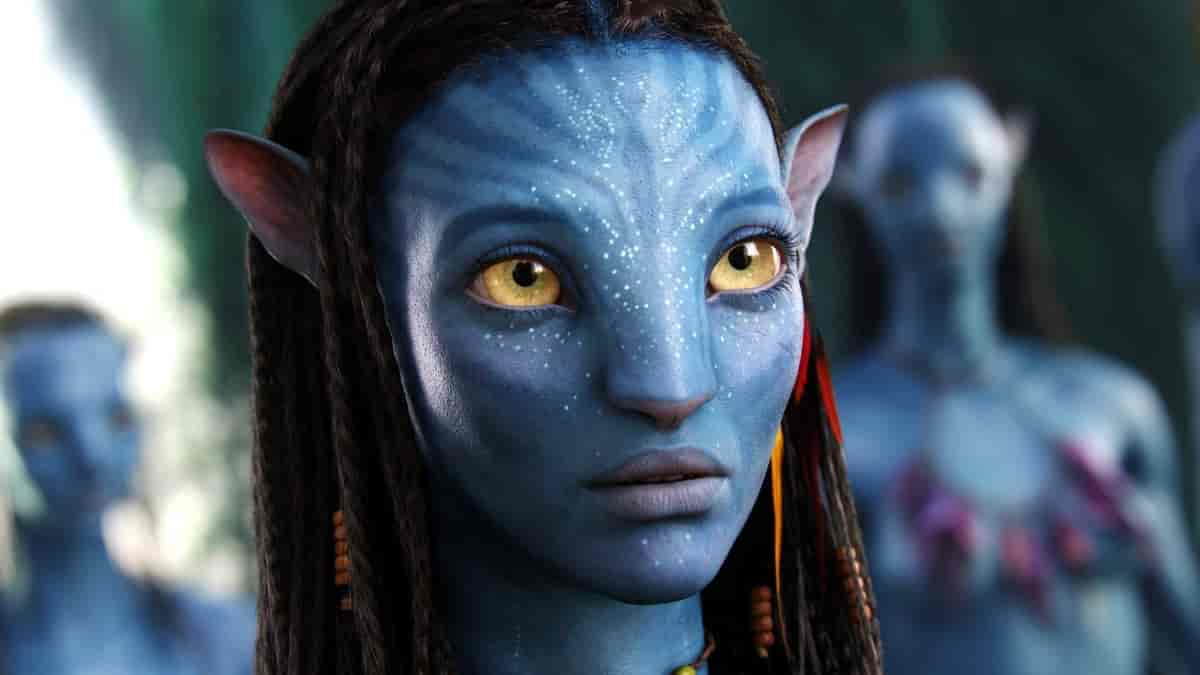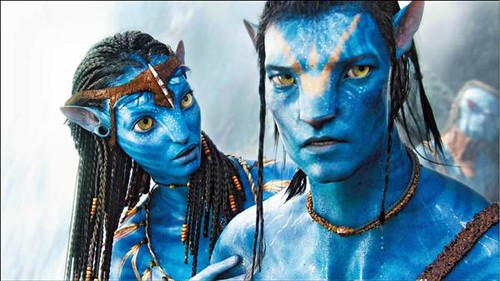
The turn of the millennium, often dubbed the ’00s, was a period of seismic shifts across popular culture, but nowhere was this more evident than in the realm of cinema. It was a decade where imagination truly broke free, fueled by astonishing technological advancements that transformed the very fabric of visual storytelling. We witnessed the rise of what would become the absolute frontiers of vision and special effects, setting new benchmarks for immersive worlds and breathtaking spectacle on the big screen.
Indeed, the 2000s heralded an era where the usage of computer-generated imagery became more widespread in films, pushing boundaries previously thought impossible. What once felt like a novelty in the mid-1990s with films like “Toy Story” became the standard, enabling filmmakers to craft complex, fantastical worlds and dynamic action sequences with unprecedented detail. This shift wasn’t just about making things look good; it was about bringing entire universes to life, from distant alien planets to the intricate mechanics of superhero suits.
As we embark on this journey, we’ll revisit 14 pivotal films from the ’00s that weren’t just blockbusters, but true pioneers. These movies captivated audiences worldwide, not only with their compelling narratives but also with their groundbreaking visual effects and visionary world-building. For many media commentators, “advances in special effects technology played a more significant role” in the soaring popularity of genres like superhero films, proving that cutting-edge visuals were indispensable to the decade’s most iconic cinematic experiences. Let’s dive into the first seven that kickstarted this visual revolution.
1. **Avatar (2009)**
No discussion of ’00s cinematic innovation, particularly concerning visual effects and world-building, can begin without acknowledging James Cameron’s “Avatar.” This American science fiction film, released in the closing moments of the decade, quite literally set a new standard for what was possible on screen. It wasn’t just a movie; it was an event, a declaration of a new age of filmmaking that leveraged technology to craft an entirely believable, vibrant alien ecosystem.
“Avatar” made extensive use of cutting edge motion capture filming techniques, a method that allowed for an unprecedented level of realism and emotional depth in its computer-generated characters. The integration of live-action performances with these digital creations was seamless, pulling audiences fully into the lush, bioluminescent world of Pandora and its Na’vi inhabitants. This wasn’t merely CGI for spectacle; it was CGI for immersion, creating a sense of presence that was revolutionary.
The film’s release strategy was equally groundbreaking, tailored to capitalize on the burgeoning popularity of 3D viewing. “Avatar” was released for traditional viewing, but also critically in 3D using RealD 3D, Dolby 3D, XpanD 3D, and IMAX 3D formats, making it the definitive 3D experience of its time. “3D films became more and more successful throughout the 2000s, culminating in the unprecedented success of 3D presentations of Avatar.” It was even “released in ‘4D’ in select South Korean theaters,” signaling a future where cinematic engagement would transcend mere sight and sound. Unsurprisingly, its monumental technical achievements contributed to it becoming the highest-grossing film of the decade, a testament to its visionary impact.
Read more about: The Unseen Architects: 12 Pivotal Innovations That Forever Changed the Landscape of Film Production
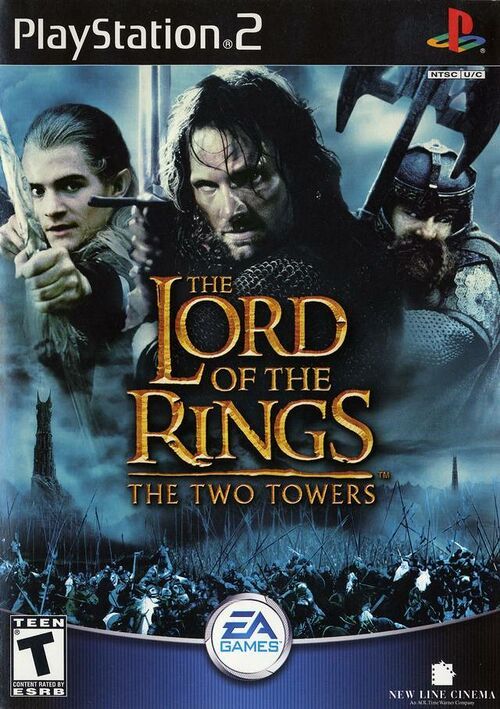
2. **The Lord of the Rings: The Return of the King (2003)**
While rooted in epic fantasy rather than strict science fiction, “The Lord of the Rings: The Return of the King” stands as an undeniable pinnacle of ’00s cinematic achievement, particularly in its breathtaking world-building and special effects. Directed by Peter Jackson, this film, based on the second and third volumes of J. R. R. Tolkien’s iconic series, brought a beloved literary saga to life with a scale and fidelity that captivated millions. It concluded a trilogy that redefined what audiences expected from a fantasy epic.
The sheer ambition of Middle-earth’s depiction was staggering. From the majestic spires of Minas Tirith to the desolate, volcanic wastes of Mordor, every environment was rendered with meticulous detail, often requiring groundbreaking computer-generated imagery and expansive practical effects. The epic battles, featuring armies of thousands, were revolutionary in their scope and complexity, demonstrating how VFX could convincingly portray massive conflicts without losing a sense of individual struggle or tactical choreography.
Its critical acclaim mirrored its technical prowess. “The Lord of the Rings: The Return of the King was nominated for eleven Academy Awards and won all the categories for which it was nominated,” including Best Picture. This perfect sweep underscored not only its storytelling strength but also its immense technical and artistic contributions to filmmaking. The film is even “tied for largest number of awards won with Ben-Hur (1959) and Titanic (1997),” placing it among the most celebrated achievements in cinematic history, a direct result of its visionary execution.
Read more about: The Dark Side of the Hero: 13 Films Where Protagonists Unmask Their Own Villainy
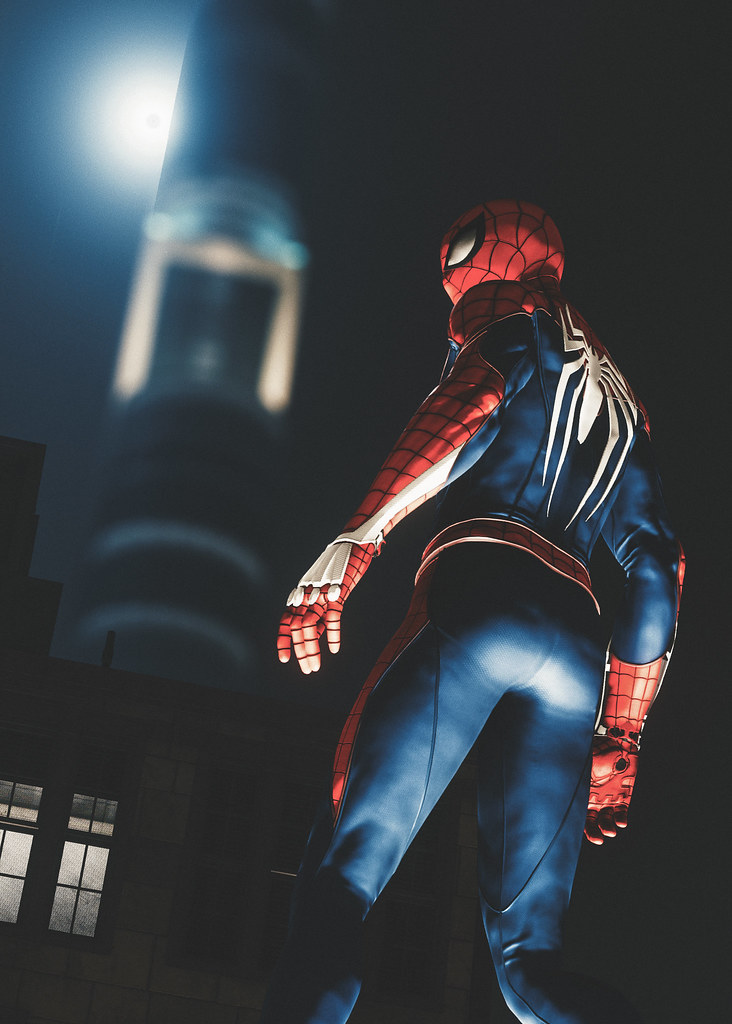
3. **Spider-Man 2 (2004)**
The early 2000s saw a massive resurgence in the superhero film genre, and among the “greatest superhero films” that propelled this wave was “Spider-Man 2.” This sequel to the successful 2002 original elevated the superhero narrative and its accompanying visual effects to new heights, demonstrating a refined understanding of how special effects could serve character and story, making the impossible feel tangible.
“Spider-Man 2” was lauded for its dynamic action sequences, particularly the fluid and acrobatic movements of Spider-Man himself as he swung through a meticulously rendered New York City. The central villain, Doctor Octopus, was brought to life with a combination of impressive practical effects for his mechanical arms and sophisticated CGI, allowing for intricate interactions that felt genuinely threatening and integrated into the live-action environment. The fusion of the real and the digital was remarkably convincing.
This film, along with its predecessor, exemplified the idea that “advances in special effects technology played a more significant role” in the burgeoning popularity of superhero franchises. Audiences were no longer just seeing comic book panels come to life; they were immersed in a believable world where extraordinary powers and threats had real-world consequences. “Spider-Man 2” proved that a sequel could not only surpass its original in narrative depth but also in pushing the visual envelope, solidifying its place as a cornerstone of the ’00s superhero boom.
Read more about: The Cinematic Curtain Call: 14 Comic Book Movie Endings That Defined — Or Nearly Redefined — Their Sagas

4. **The Dark Knight (2008)**
As the 2000s drew to a close, the superhero genre matured, taking on darker, more complex tones, and no film embodied this evolution quite like “The Dark Knight.” Listed among the “greatest superhero films” of the decade, Christopher Nolan’s sequel to “Batman Begins” transcended typical comic book fare, crafting a gritty, hyper-realistic urban world that felt both familiar and terrifyingly new. It was a masterclass in how to ground fantastical elements in a visceral reality.
While not as reliant on overt CGI spectacle as some contemporaries, “The Dark Knight” masterfully utilized visual effects to enhance its meticulously choreographed action and create iconic moments that remain etched in cinematic memory. The film’s stunning practical effects, combined with subtle but impactful CGI, allowed for large-scale destruction and thrilling pursuits to unfold with a profound sense of weight and consequence. The detailed Gotham City itself became a character, a sprawling, menacing backdrop for the escalating chaos.
The immense success and critical acclaim of “The Dark Knight” underscored a significant trend of the era. Its popularity was attributed by “some media commentators to the social and political climate in Western society since the September 11th attacks,” reflecting a desire for more grounded, psychologically resonant stories. However, “others argued advances in special effects technology played a more significant role,” enabling the filmmakers to execute their ambitious vision with unparalleled realism, making the heightened reality of Gotham City undeniably compelling and cementing the film’s status as a visual and narrative landmark of the decade.
Read more about: The Cinematic Curtain Call: 14 Comic Book Movie Endings That Defined — Or Nearly Redefined — Their Sagas

5. **Iron Man (2008)**
The year 2008 marked a pivotal moment in cinematic history with the release of “Iron Man,” a film that not only became one of the “greatest superhero films” of the ’00s but also kickstarted something truly monumental: the Marvel Cinematic Universe. This movie was a revelation, not just for its charismatic lead performance but for its seamless integration of advanced technology and cutting-edge visual effects to create one of the most iconic armored heroes in pop culture.
The visual spectacle of Iron Man’s suit, from its intricate design and construction to its incredible flight sequences and weapon systems, was a testament to the decade’s advancements in CGI. The transformation of a raw idea into a sophisticated, high-tech flying weapon was rendered with an almost tactile realism, making audiences believe that such a suit could actually exist. The intricate details of the armor, reflecting light and interacting with its environment, were simply stunning.
“Iron Man” perfectly illustrated how “advances in special effects technology played a more significant role” in the renewed interest and subsequent explosion of the superhero genre. The ability to convincingly portray a character who builds and operates such a complex, powered suit was crucial to the film’s success. It wasn’t just about showing a man in a suit; it was about showing the suit’s capabilities, its physics, and its profound impact on the world, thereby establishing a new benchmark for technological realism in superhero cinema.
Read more about: The Cinematic Curtain Call: 14 Comic Book Movie Endings That Defined — Or Nearly Redefined — Their Sagas
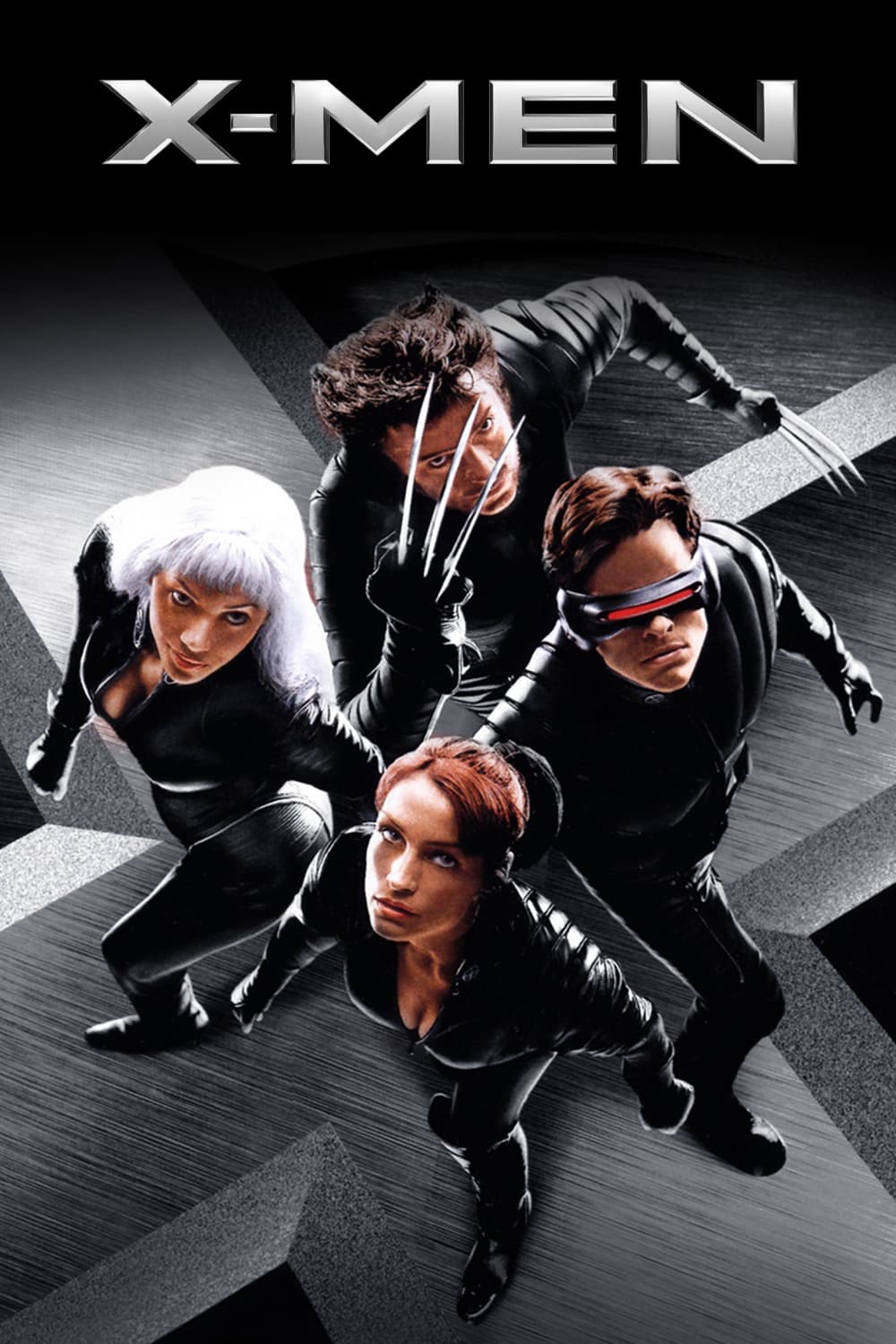
6. **X-Men (2000)**
Kicking off the new millennium with a bang, “X-Men” arrived in 2000 and immediately established itself as one of the foundational “greatest superhero films” of the decade. This movie was instrumental in proving that a large-scale ensemble superhero film, featuring a diverse cast of characters with extraordinary powers, could be both critically acclaimed and commercially successful. It presented a compelling new world where mutants lived among humans, each with unique, visually stunning abilities.
The film’s visual effects were central to its appeal, showcasing the varied and often spectacular powers of its mutant characters. From Wolverine’s retractable claws and Cyclops’s optic blasts to Storm’s weather manipulation and Magneto’s control over metal, each power was rendered with a clarity and impact that immersed viewers in the mutant world. These effects were not merely flashy; they were integral to defining each character and their place within this complex society.
Like many of its superhero contemporaries, “X-Men” benefited significantly from the “advances in special effects technology” that were becoming prevalent in the 2000s. These advancements allowed for the faithful and exciting portrayal of powers that would have been unimaginable just a decade prior, contributing significantly to the film’s popularity and setting a high bar for the visual language of superhero movies to come. It was a clear demonstration that detailed visual effects were key to bringing intricate comic book lore successfully to the big screen, thereby cementing its status as a visionary film.
Read more about: The 16 Most Drop-Dead Gorgeous Actors and Actresses Who Defined 1970s Hollywood

7. **Monsters, Inc. (2001)**
Shifting our focus to the world of animation, “Monsters, Inc.” stands as a shining example of Pixar’s unparalleled contribution to the “frontiers of vision” in the early 2000s. “Pixar and DreamWorks Animation proved themselves to be the most successful, yet rivaling, studios throughout the 2000s,” and “Monsters, Inc.” was a critical and commercial success for Pixar, showcasing their mastery of computer-animated storytelling and character design.
The film transported audiences into a whimsical yet meticulously crafted world of monsters whose job it was to scare children to generate energy. The visual inventiveness was astounding, particularly in the detailed textures and movements of its diverse monster population. Sulley, one of the main protagonists, famously boasted millions of individual hairs, a technical feat that was revolutionary at the time, allowing for incredibly realistic and expressive fur animation that contributed immensely to his character’s warmth and believability.
“Computer animated films became hugely popular following the release of Toy Story in the mid-1990s,” and “Monsters, Inc.” pushed this evolution further, demonstrating the increasing sophistication of CGI beyond just smooth, plastic-like characters. The film’s ability to render complex materials and environmental details with such artistry solidified Pixar’s reputation as a pioneer, proving that animation could create richly textured, emotionally resonant worlds that resonated with audiences of all ages and continued to redefine the visual standards for animated features.
Continuing our journey through the ’00s, it’s time to delve deeper into the visual landscape, exploring an additional seven films that left an indelible mark. This section highlights the era’s diverse animation triumphs, showcasing everything from Pixar’s character-driven masterpieces and DreamWorks’ award-winning fantasies to the breathtaking artistry of Japanese anime. We’ll examine how these productions further pushed the boundaries of visual effects and world-building, cementing the decade as a true golden age for cinematic innovation.
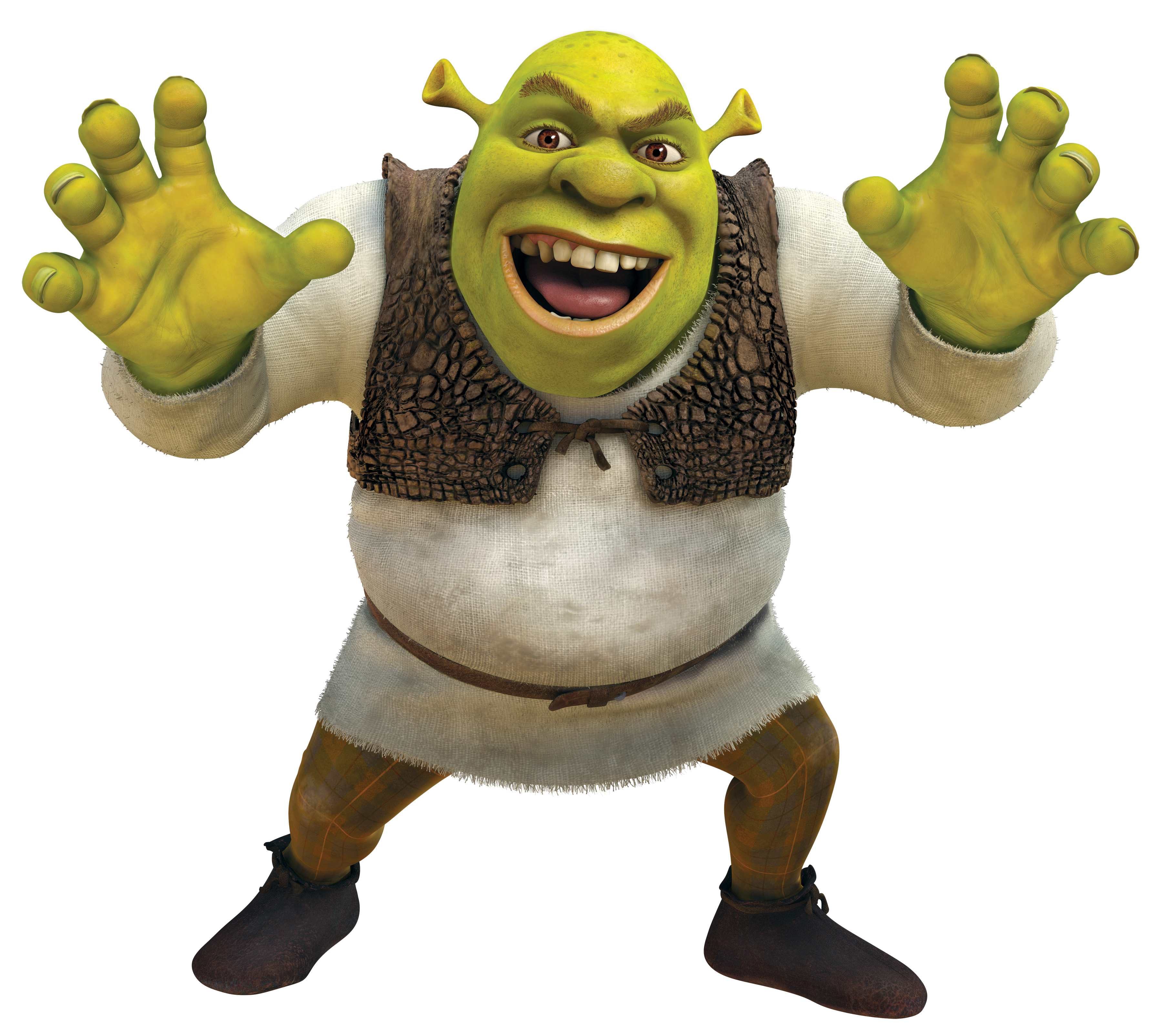
8. **Shrek (2001)**
Stepping away from the traditional fairy tale, DreamWorks Animation truly hit its stride with “Shrek” in 2001. This irreverent and heartwarming film wasn’t just a commercial smash; it was a cultural phenomenon that reshaped animated cinema. It boldly challenged the conventions of the genre, offering a fresh, witty narrative that captivated audiences worldwide. “Shrek” even made history, becoming the first recipient of the Academy Award for Best Animated Feature in 2002, a monumental achievement that underscored its groundbreaking impact.
Visually, “Shrek” was a triumph of early 2000s CGI, pushing the envelope in character design and environmental rendering. The animators meticulously crafted an array of distinct characters, from the gruff but lovable Ogre to the fast-talking Donkey, each brimming with personality. More impressively, the film’s environments, such as the murky swamp and the bustling kingdom of Duloc, showcased significant advancements in rendering believable textures, from realistic mud and flowing water to the intricate details of distant castles. These visuals ensured the fantastical world felt tangible and immersive.
The film’s ingenious blend of humor, memorable characters, and sophisticated animation struck a chord with both critics and audiences. It proved that computer-animated films could deliver nuanced storytelling alongside cutting-edge visuals, appealing to children and adults alike with its sharp parody and genuine emotional depth. This dual appeal was instrumental in solidifying DreamWorks Animation as a formidable rival to Pixar, ushering in a new era of diverse animated narratives.
“Shrek” didn’t just entertain; it redefined what an animated film could be, moving beyond saccharine sweet stories to embrace a more cynical yet ultimately uplifting tone. Its success spurred a wave of animated features that dared to be different, influencing countless films that followed. It stands as a pivotal moment in the decade, showcasing how innovative storytelling, backed by pioneering visual effects, could create an enduring cinematic legacy.
Read more about: Rewind & Relive: 15 Iconic Movies So Good, You’ll Seriously Wish for a Time Machine to Watch Them Again!

9. **Finding Nemo (2003)**
Pixar continued its unparalleled streak of animated masterpieces with “Finding Nemo” in 2003, submerging audiences into an exquisitely rendered underwater world. This film was not merely a heartwarming tale of a father’s quest; it was a breathtaking visual odyssey that set new benchmarks for environmental realism in computer animation. Its immense critical and commercial success further cemented Pixar’s reputation as a studio operating at the “frontiers of vision” for animated storytelling.
The technical artistry involved in creating the vibrant, dynamic ocean environment of “Finding Nemo” was nothing short of revolutionary. Animators grappled with the complex challenges of rendering water, including light refraction, subsurface scattering, and fluid dynamics, to create a believable aquatic world. Every ripple, every sunbeam piercing the surface, and the sheer vastness of the ocean deep were meticulously crafted, making the setting itself a captivating character in the narrative.
Beyond the water, the film brought to life an astonishing array of marine creatures, from the titular clownfish, Marlin and Nemo, to the formidable Great White Shark, Bruce, and the wise sea turtle, Crush. Each character was imbued with distinct personality through expressive animation and intricate textures, making their emotional journeys profoundly resonant. The meticulous attention to detail in their movements and interactions contributed immensely to the film’s immersive quality, pulling viewers directly into their perilous adventure.
“Finding Nemo” exemplified how visual fidelity could profoundly deepen emotional storytelling. The dangers of the open ocean, the beauty of the coral reef, and the sheer wonder of unexplored depths were all rendered with such conviction that they amplified the characters’ struggles and triumphs. It remains a powerful testament to Pixar’s ability to combine technical innovation with universal themes, leaving an indelible mark on the landscape of computer-animated films and inspiring future generations of visual effects artists.
Read more about: Get Ready to Rewatch! These 15 Movies Are So Iconic, They’ve Practically Moved Into Your Brain
10. **Spirited Away (2001)**
From the imaginative mind of Hayao Miyazaki and Studio Ghibli came “Spirited Away” in 2001, an artistic and narrative marvel that transcended cultural boundaries. This Japanese anime film was not just a critical darling; it earned an Academy Award for Best Animated Feature, a rare feat for a non-English language production, affirming its status as a global masterpiece and a monumental achievement in the decade’s animation landscape.
“Spirited Away” immersed viewers in a rich, fantastical spirit realm, characterized by a unique visual aesthetic that seamlessly blended traditional hand-drawn animation with subtle digital enhancements. Every frame is a testament to meticulous artistry, showcasing breathtaking landscapes, intricate architectural details of the bathhouse, and an astonishing array of imaginative creatures. The interplay of vibrant colors and intricate designs created an unparalleled sense of depth and atmosphere, drawing audiences into its enigmatic world.
The film’s visual narrative is a masterclass in world-building, where fantastical elements feel utterly believable. From the enigmatic No-Face to the adorable soot sprites, each character and setting is imbued with a distinct personality that contributes to the film’s immersive quality. This approach demonstrated the profound capacity of animation to create complex, emotionally resonant stories through visual storytelling that transcends conventional cinematic techniques.
“Spirited Away” not only captivated audiences with its breathtaking visuals and compelling story but also played a crucial role in elevating Japanese anime on the international stage. It proved that animation could explore profound themes with artistic sophistication, further expanding the “frontiers of vision” in global cinema. Its enduring legacy lies in its ability to transport viewers to a truly unique, dreamlike world, leaving an unforgettable visual and emotional impression.
Read more about: Unveiling the Titans: 13 Legendary Directors Who Redefined the Art of Cinema
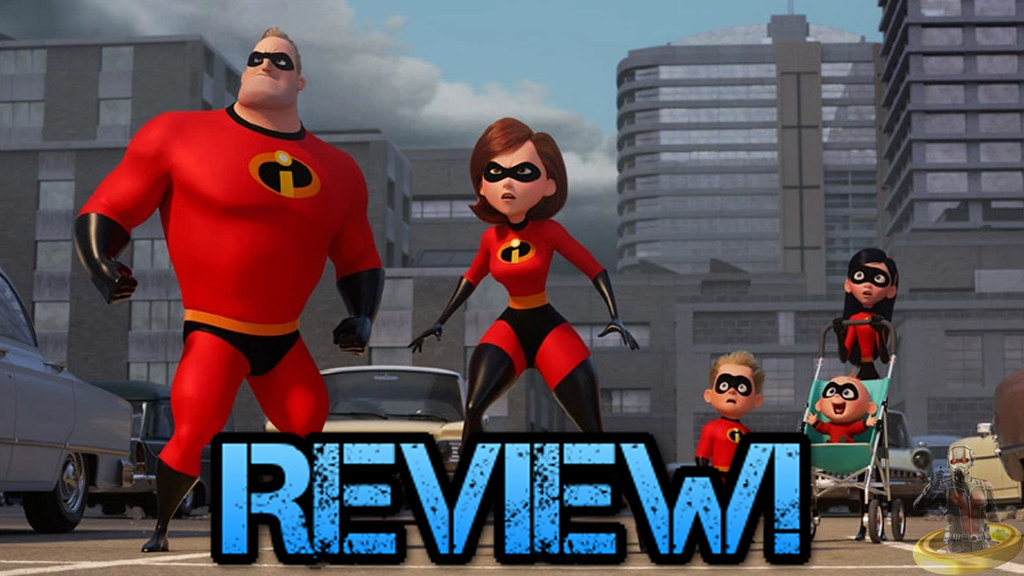
11. **The Incredibles (2004)**
Pixar once again pushed the boundaries of animated storytelling with “The Incredibles” in 2004, bravely venturing into the superhero genre with unparalleled style and sophisticated animation. This critically acclaimed and commercially successful film was a dynamic departure, showcasing the studio’s versatility by tackling human characters and high-octane action sequences with remarkable fidelity and flair. It quickly became a fan-favorite, lauded for its innovative visual approach.
A significant challenge for animators has always been the realistic portrayal of human characters, and “The Incredibles” confronted this head-on, delivering a cast of superheroes that were both relatable and distinct. The animators mastered subtle facial expressions and complex body movements, bringing remarkable nuance to the characters’ performances. The film’s distinctive retro-futuristic aesthetic, from the sleek mid-century modern architecture to the iconic superhero costumes, further enhanced its unique visual identity, setting it apart from its animated contemporaries.
Beyond character design, the film delivered some of the most spectacular and intricate action sequences seen in animation at the time. From Mr. Incredible’s super-strength to Elastigirl’s fluid transformations and Dash’s super-speed, each power was rendered with exhilarating visual impact. The destruction of cityscapes, high-speed chases, and multi-character battles were executed with a sense of weight and consequence that rivaled live-action blockbusters, making the extraordinary feel incredibly real.
“The Incredibles” solidified Pixar’s ability to innovate across diverse genres, proving that animation could offer not just charm and humor, but also the thrilling spectacle of a blockbuster action film. Its contributions to character rigging, dynamic physics for super-abilities, and sophisticated visual effects cemented its place as a groundbreaking achievement. It demonstrated that animated films could redefine the visual language of the superhero narrative.
Read more about: You’ll Cheer! The 13 Most Satisfying Villain Defeats That Still Feel Absolutely Earned (and Trust Us, They’re Epic!)

12. **Kung Fu Panda (2008)**
As the decade neared its close, DreamWorks Animation delivered another visual spectacle with “Kung Fu Panda” in 2008. This vibrant animated feature captivated audiences with its unique blend of martial arts action, heartwarming comedy, and a distinctive visual style deeply inspired by Eastern aesthetics. It was a critical and commercial hit, further establishing DreamWorks’ prowess in creating engaging and visually rich animated worlds.
The film’s art direction was a standout, drawing heavily from traditional Chinese painting and calligraphy to craft its lush, stylized landscapes and intricately designed characters. From the majestic Valley of Peace to the ominous Chorh-Gom Prison, every environment was rendered with breathtaking detail and a rich color palette. The anthropomorphic animal characters, particularly the titular panda Po and the Furious Five, boasted incredibly detailed fur and fluid movements that brought them vividly to life, making them feel both fantastical and tangible.
“Kung Fu Panda” truly shone in its exhilarating martial arts choreography. The animation team meticulously translated the grace, power, and speed of various kung fu styles into dynamic, weighty, and visually impactful fight scenes. The visual effects were paramount in making each kick, punch, and leap resonate, seamlessly integrating character animation with environmental interaction. This technical marvel set a new standard for action sequences in animated cinema.
Through its innovative visual storytelling and stunning animation, “Kung Fu Panda” created an immersive world that resonated deeply with audiences. It exemplified DreamWorks’ commitment to crafting captivating narratives supported by pioneering visual effects, showcasing animation’s capacity for cultural homage and thrilling spectacle. The film remains a celebrated example of the diverse and ambitious “frontiers of vision” explored in the ’00s.

13. **WALL-E (2008)**
In 2008, Pixar once again demonstrated its unparalleled genius with “WALL-E,” a film that transcended traditional animated storytelling through its profound visual narrative. This audacious venture, featuring a largely silent opening act, delivered a powerful environmental message and a deeply moving character study, proving animation’s capacity for sophisticated, thought-provoking cinema that resonated globally and further pushed the “frontiers of vision.”
The technical brilliance in animating the titular robot, WALL-E, and his sleek counterpart, EVE, was astounding. With minimal dialogue, the animators conveyed an incredible range of emotions and personality through subtle movements, expressive “eyes,” and carefully crafted mechanical sounds. This approach to character animation was a masterclass in visual communication, allowing audiences to connect with these robots on a profoundly human level, a testament to Pixar’s storytelling acumen.
The film’s visual scope was equally breathtaking, showcasing two starkly contrasting environments. The desolate, junk-filled Earth was rendered with astonishing detail, conveying both the tragic consequences of human neglect and the beauty found in desolation. This was juxtaposed with the pristine, futuristic cosmic environments aboard the Axiom spaceship, where glittering stars and advanced technology underscored the contrast between a dying Earth and humanity’s attempt at escape. These visuals were integral to the film’s narrative impact.
“WALL-E” stands as a monumental achievement, not only for its technical prowess in rendering complex environments and emotive mechanical characters but also for its bold storytelling. It underscored the power of animation to convey complex themes and emotional depth with minimal exposition, cementing Pixar’s reputation as a studio that consistently pushed the artistic and technical boundaries of visual effects, creating an unforgettable and poignant cinematic experience.
Read more about: Decoding Pixar: How Innovation, Strategic Shifts, and Creative Vision Forged an Animation Empire
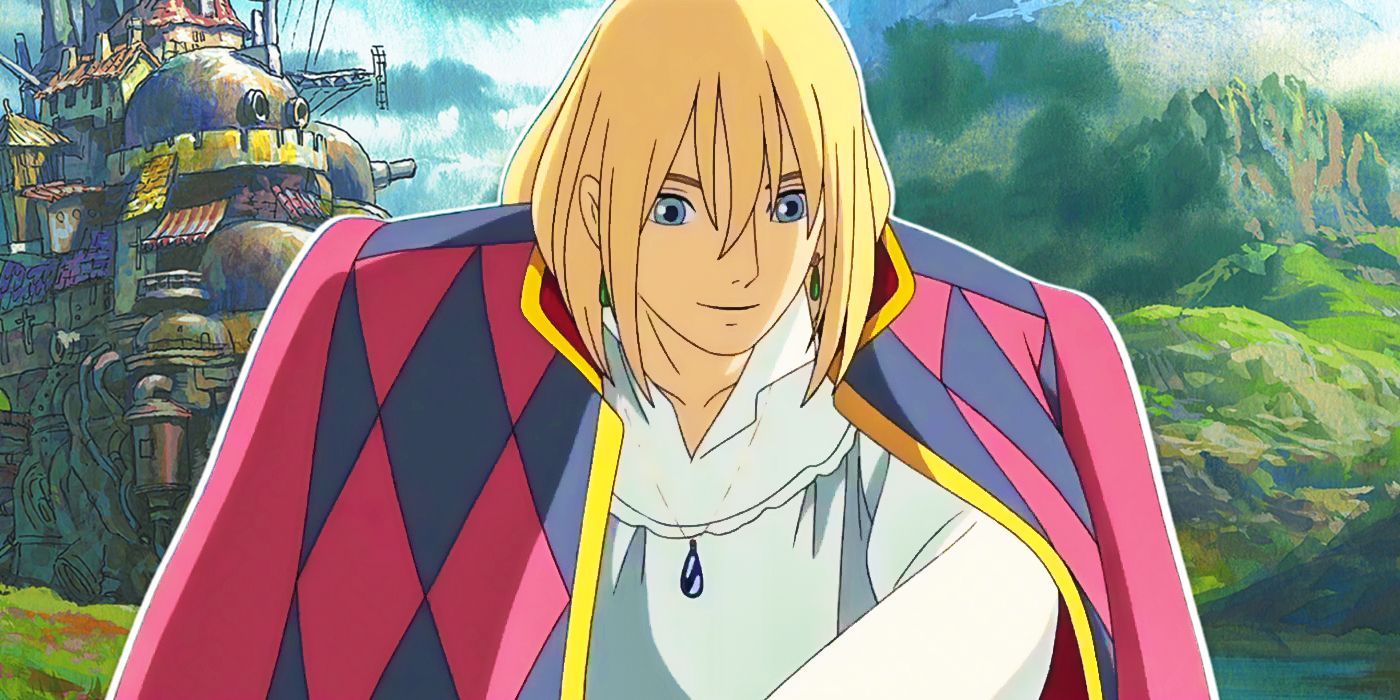
14. **Howl’s Moving Castle (2004)**
Concluding our journey through the ’00s cinematic landscapes, we revisit the magical world of “Howl’s Moving Castle,” another stunning creation from Studio Ghibli and the visionary director Hayao Miyazaki in 2004. This film, celebrated for its imaginative narrative and breathtaking artistry, solidified Japanese anime’s continued influence on global visual storytelling, offering a unique blend of fantasy and intricate design that captivated audiences.
At the heart of the film’s visual spectacle is the eponymous moving castle itself. This fantastical contraption is a marvel of animated engineering, a sprawling, steampunk-inspired structure that lumbered across the landscape with a life of its own. Every cog, pipe, and mismatched addition was meticulously designed and animated, transforming a mere setting into a character of intricate detail and ever-changing personality. This required a remarkable synergy between traditional design and advanced animated motion.
The film’s visual aesthetic is a vibrant tapestry, from the picturesque European-inspired landscapes that serve as its backdrop to the magical spells and character transformations. Miyazaki’s signature use of rich, warm color palettes and fluid animation created a truly enchanting and dreamlike experience. The blend of fantastical creatures, dynamic action sequences, and serene natural beauty showcased the studio’s unparalleled ability to create visually dense and emotionally resonant worlds.
“Howl’s Moving Castle,” alongside “Spirited Away,” served as a powerful testament to the artistic depth and unique visual language of Japanese anime in the 2000s. It demonstrated that animation could craft worlds of immense imagination and beauty, further expanding the “frontiers of vision” for cinematic expression. This film remains a cherished example of how hand-drawn artistry, augmented by thoughtful digital integration, could produce a truly timeless and visually influential piece of cinema.
Reflecting on these 14 extraordinary films, it becomes undeniably clear that the ’00s were a golden age for cinematic innovation. From the dazzling photorealism of CGI blockbusters to the exquisite artistry of animated features from Pixar, DreamWorks, and the revered Studio Ghibli, the decade continuously raised the bar. These films didn’t just entertain; they were testaments to human ingenuity, pushing the boundaries of what was conceivable on screen. They crafted universes that transported us, leaving an indelible mark on our imaginations and forever altering the landscape of visual effects. The legacy of the ’00s is one of bold vision, technological triumph, and an unyielding passion for bringing the impossible to vibrant, unforgettable life.

